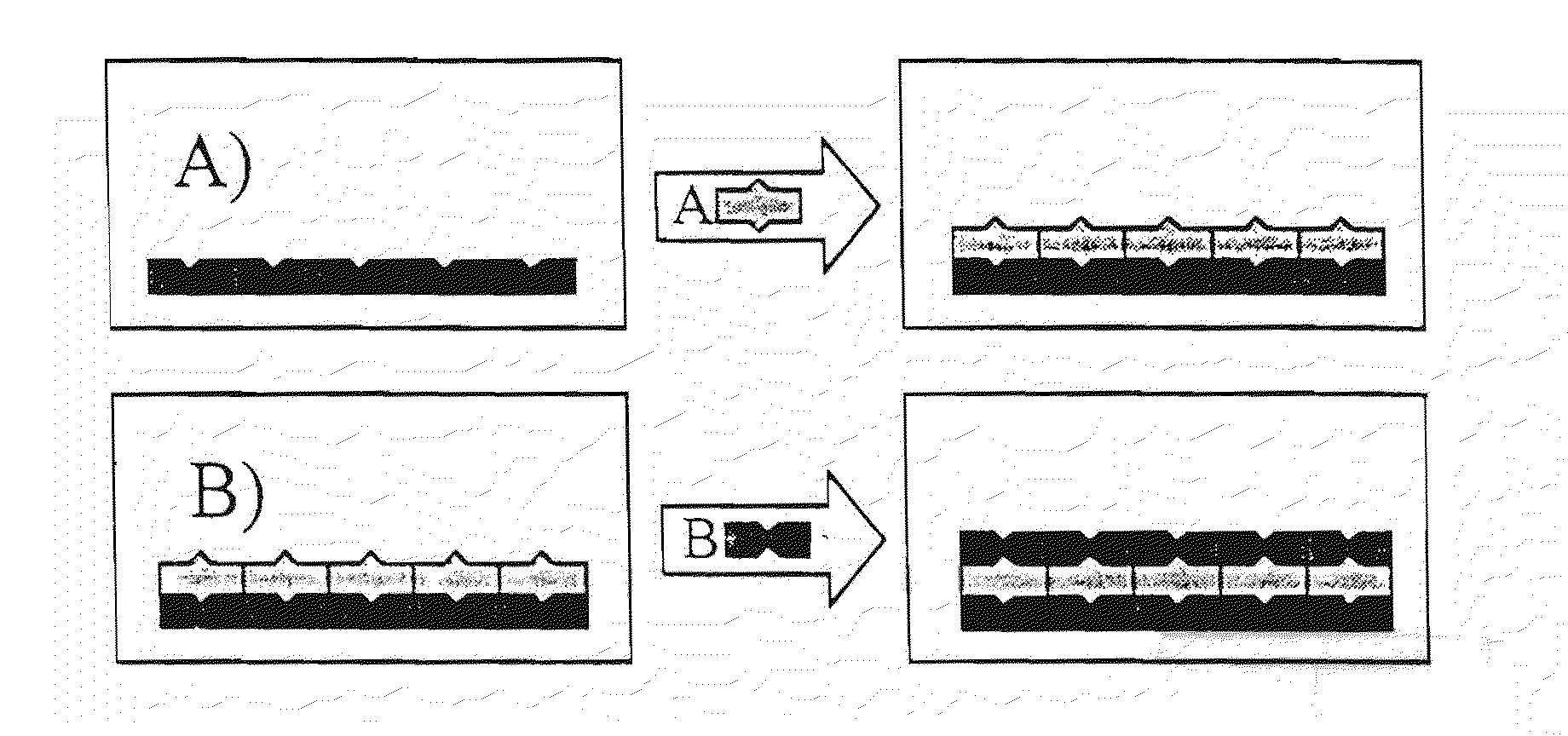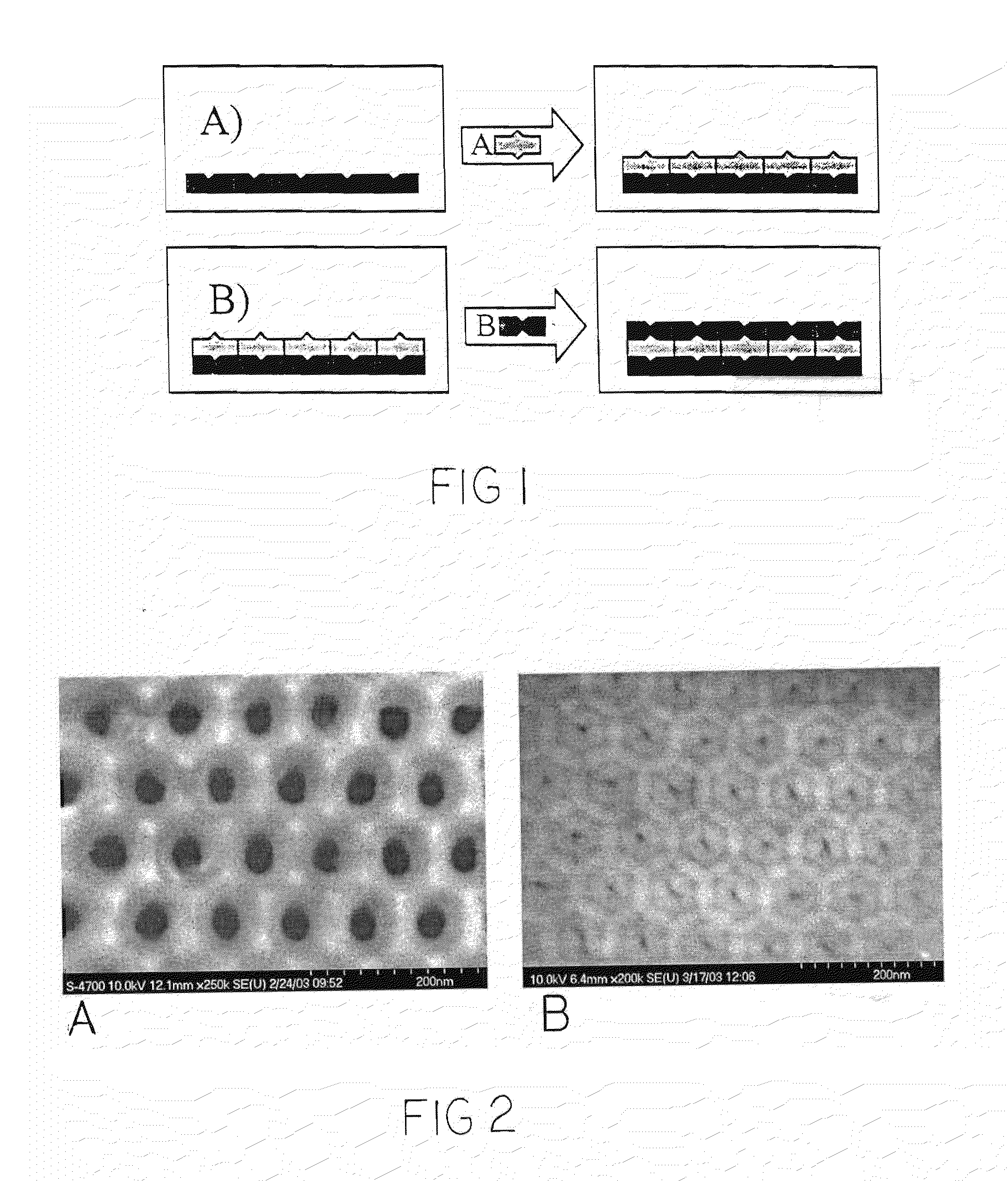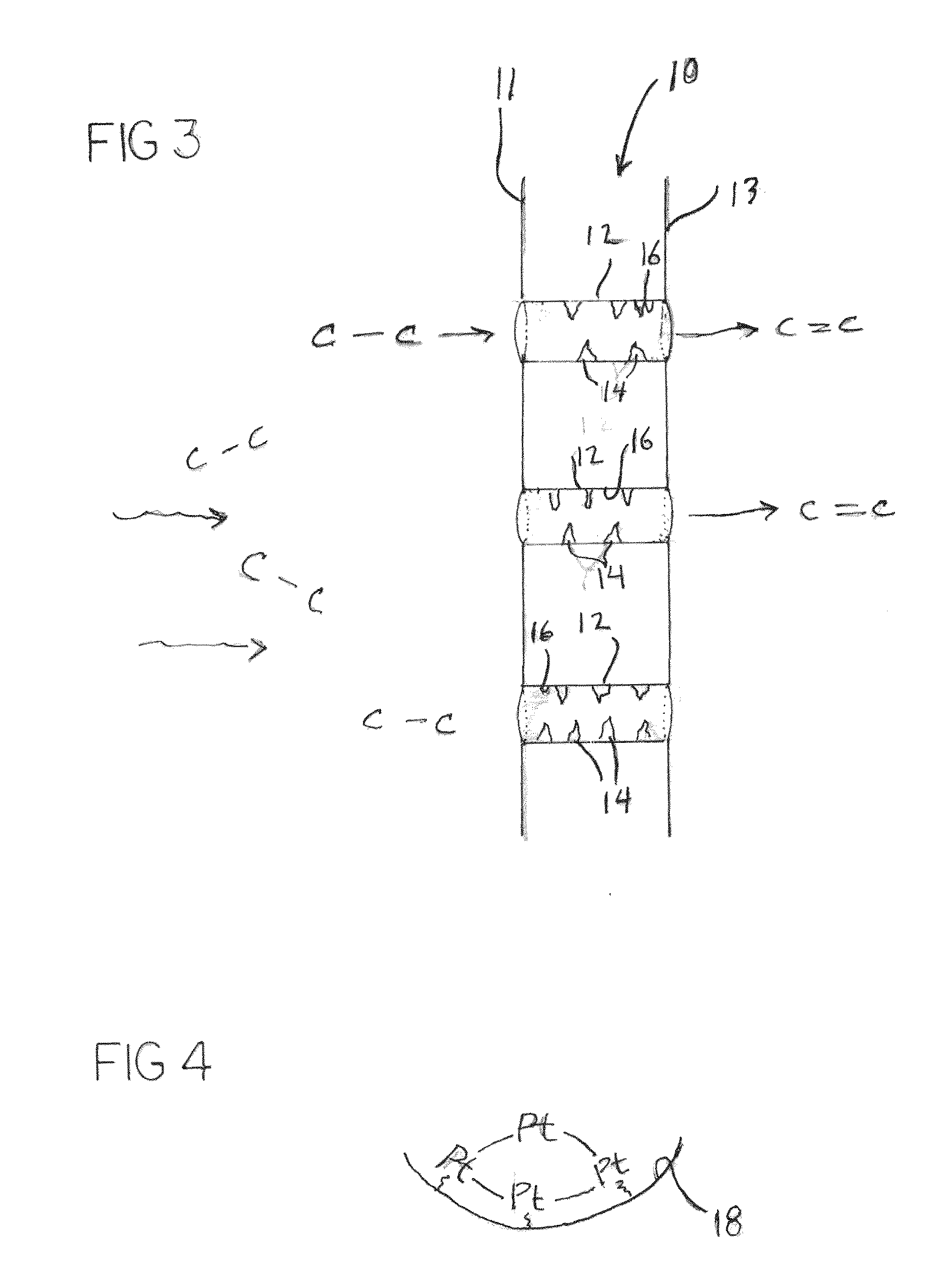Catalytic nanoporous membranes
a nanoporous membrane and catalyst technology, applied in physical/chemical process catalysts, metal/metal-oxide/metal-hydroxide catalysts, other chemical processes, etc., can solve the problems of not employing membrane catalysts, no nanoporous membrane disclosure, no nanoporous membrane creation method, etc., to achieve unique catalyst environment, short contact time, and reduce aao pore size
- Summary
- Abstract
- Description
- Claims
- Application Information
AI Technical Summary
Benefits of technology
Problems solved by technology
Method used
Image
Examples
Embodiment Construction
[0032]The inventors have produced catalytic membranes that display several unique features, including higher specificities than conventional catalysts. The invention uses anodic aluminum oxide (AAO) membranes as the catalyst substrate. Other suitable substrates include Vanadia catalysts. Supported vanadia catalyst systems are excellent systems for investigating the effect of nanostructure on the activity and selectivity of oxidation catalysts, and offer the prospect of developing a new generation of optimized selective oxidation catalysts.
[0033]Where AAO substrates are used, the substrate is subjected to Atomic Layer Deposition (ALD), which allows the controlled narrowing of pores in the substrate by deposition of whatever material is required for catalysis in atomic layers on the inner surface of the pores. In addition to the anodic alumina membranes, tubular ceramic membranes such as the asymmetric gamma-alumina tubular membranes which are commercially available and have a high co...
PUM
| Property | Measurement | Unit |
|---|---|---|
| diameters | aaaaa | aaaaa |
| pore size distribution | aaaaa | aaaaa |
| kinetic diameters | aaaaa | aaaaa |
Abstract
Description
Claims
Application Information
 Login to View More
Login to View More - R&D
- Intellectual Property
- Life Sciences
- Materials
- Tech Scout
- Unparalleled Data Quality
- Higher Quality Content
- 60% Fewer Hallucinations
Browse by: Latest US Patents, China's latest patents, Technical Efficacy Thesaurus, Application Domain, Technology Topic, Popular Technical Reports.
© 2025 PatSnap. All rights reserved.Legal|Privacy policy|Modern Slavery Act Transparency Statement|Sitemap|About US| Contact US: help@patsnap.com



